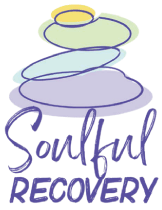Heroin And Fentanyl Addiction
What is Heroin and Fentanyl Addiction?
Heroin and Fentanyl addiction work by hijacking key parts of the brain. When taken, these substances bind to the mu-opioid receptor (MOR’s), which regulates pain receptors in the body. When MOR’s are activated, they signal a release of dopamine throughout the brain and body. Dopamine is primarily associated with pleasure, motivation, motor functions and memory. With persistent use, the brain stops releasing dopamine naturally because it is being introduced externally. Overtime, heroin and fentanyl users will have to use more and more of these substances to create the same stimulation they have become dependent on. This leads to drug dependency, increased tolerance, and withdrawal symptoms.
Heroin addiction is one of the most prevalent and difficult substances to overcome. According to a 2020 survey by SAMHSA, just under 1 million people ages 12 and older had Heroin Use Disorder in the U.S. Similarly, Fentanyl related deaths have swept the nation for several years now. It is 100 times more potent than heroin and is legally prescribed by physicians around the U.S. Both of these substances are derivatives of opioids. Fentanyl and other opioids are commonly prescribed as a pain management tool. However, some patients become dependent on these substances and start to misuse them, which creates the catalyst for addiction.
Signs And Symptoms of Heroin And Fentanyl Addiction
If you are the loved one of someone you suspect is suffering from addiction, it can be rather difficult to be sure. To help identify whether or not someone has succumbed to opioid addiction, we have included some of the most common signs and symptoms associated with these substances.
One important caveat to remember: This is only a guideline to help you identify some of the most common tendencies with this type of addiction. One or two of these symptoms alone may not paint the full picture.
With that said, if you or your loved one is displaying the following signs and symptoms, they may struggle with opioid addiction.

- Deception and/or secrecy about use
- Strong cravings to use
- Continued drug use despite negative consequences in one’s personal or professional life
- Build up tolerance over time
(Need to increase use of the drug to achieve same high) - Unwillingness or inability to stop
- Increased irritability, mood swings, social withdrawal
- Shallow breathing, pinpoint pupils, flushed skin
- Needle marks
If you or your loved one is exhibiting these signs and symptoms, contact our team members today to learn how we can help. One of our qualified admissions team members will help answer any and all of your questions you may have.

Find Your Way Today...
Learn More About What We Treat:



